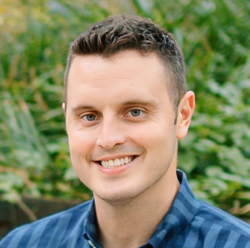
by Leigh MacMillan
David Taber, MD, laughs as he recalls the first magnetic resonance images he saw, shortly after the introduction of MRI into medical practice.
“I remember thinking, ‘these images are worthless; this technology will never amount to anything,’” said Taber, assistant professor of Clinical Radiology and Radiological Sciences and Emergency Medicine.
Now, decades later, he names MRI as his favorite imaging tool.
“MRI results in such an exquisite display of both anatomy and physiology,” he said. “I think it’s probably the favorite for most musculoskeletal radiologists.”
In addition to his clinical practice within the musculoskeletal and emergency radiology section of the Department of Radiology, Taber serves as an assistant director of the diagnostic radiology residency program.
Taber has practiced radiology for more than 40 years, with the first half of his career spent in private practice and the second half at Vanderbilt University Medical Center.
He was drawn to radiology for its role in so many areas of medicine.
“There are any number of new challenges every hour, depending on what cases come up,” he said. “Radiologists always say that every challenging case comes through the radiology department, and most rely on radiology for diagnosis and for guiding treatment.”
Taber has seen an explosion of imaging technology over the years, allowing unprecedented views of the human body and changing the rhythm of the workday.
“When I started in radiology, almost every radiology examination that could be done took longer to do than it took to read the images that resulted,” he said. “Nowadays the opposite is true: the examination can be done considerably faster and results in far more information.”
Taber grew up in Evansville, Indiana, where his boyhood interests were cars and the space program. While he was in high school, his family — “along with a million other people” — traveled to Florida to see the launch of Apollo 11, the spaceflight that landed the first two people on the moon.
Taber first came to Vanderbilt as an undergraduate and after completing three years of study, he decided to enroll in medical school at Indiana University.
“At the time it was possible to go to some medical schools without a bachelor’s degree, as long as you had all the prerequisites,” Taber said. “I always have to put a little explanatory sentence on forms that ask about my undergraduate degree.”
He completed residency training in diagnostic radiology at the University of Alabama at Birmingham, practiced at MD Anderson Cancer Center in Houston for a year and a half, and then joined a private radiology practice associated with Saint Thomas Hospital in Nashville.
After 17 years as a general radiologist, however, Taber was itching for something new.
“I was feeling restless and felt like I needed to do something a bit different and freshen my outlook,” he said. “I even considered leaving medicine, but it occurred to me one day that taking a fellowship to learn new radiology skills might be the way to go. I was very fortunate that Vanderbilt had a fellowship spot available and offered it to me.”
Taber returned to the training trenches as a fellow in 2000. Following his one-year fellowship, he joined the Vanderbilt faculty.
He has focused on clinical practice and education and is a co-investigator of a clinical trial of surgical versus non-surgical treatments for rotator cuff tears.
Academic medicine and private practice haven’t been so different for Taber, he said. While he was practicing at Saint Thomas Hospital, medical students and residents from Vanderbilt had clinical rotations at the hospital.

“I’ve always worked in a setting with students and residents, even while I was in private practice, and I really enjoy teaching,” Taber said.
He serves on the Department of Radiology’s resident recruitment and education committees and helps train residents as they rotate through the musculoskeletal radiology section.
“I interview a substantial number of the residency applicants and participate in the committee’s ranking of applicants for the national residency match program,” Taber said.
The diagnostic radiology program selects seven to nine residents each year from an applicant pool that numbers around 900.
Taber also serves on the VUMC Physician Council for Clinical Service Excellence, a group of VUMC physicians who have achieved top scores in patient satisfaction or who were nominated by their departments. The group meets monthly to share ideas, offer advice to leadership and take institutional information back to departments. Taber joined the council in 2016 and was asked to serve another two-year term starting in 2018.
Outside of the Medical Center, Taber maintains his lifelong interest in cars and motor racing, particularly Formula One racing. As a medical student in Indianapolis, he had the opportunity to work as a medical volunteer at the Indianapolis Motor Speedway, home of the Indy 500.
“The medical volunteer armband let you go anywhere — pits, garages, anywhere on the grounds…it was tremendous,” he said.
On a recent trip to France, he and his wife, Carol Ann, visited the city of Le Mans, which hosts the “24 Hours of Le Mans” race each June. During their visit, Taber had the chance to suit up and ride with a driver around the Le Mans track in a prototype two-seat sports car. Though the speed didn’t bother him, the g-forces in the turns were surprising, he said.
“I made it a point to eat a very light lunch that day, and I’m glad I did.”

















